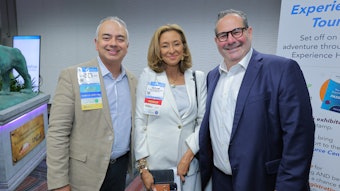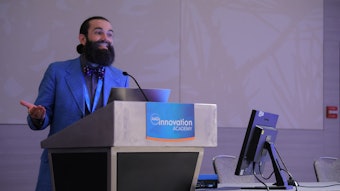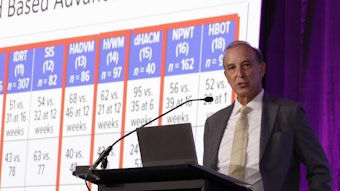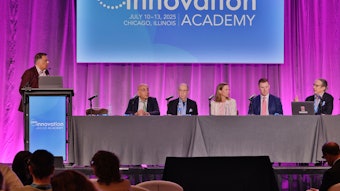Esteemed dermatologists awarded for profound impact on the specialty
Fox and Kelly lecture winners talked wound closure innovation and diverse clinical research.
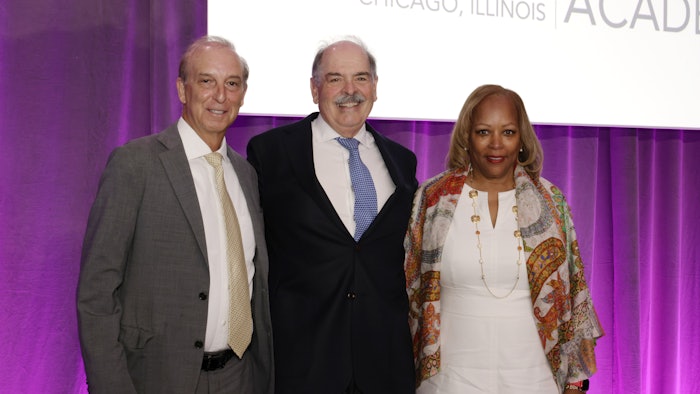
Two of dermatology’s leading clinicians honored the legacies of their predecessors in Friday’s session, N001 – Celebrating Excellence: A Duo of Distinguished Talks. Robert S. Kirsner, MD, PhD, FAAD, and Valerie D. Callender, MD, FAAD, delivered the Everett C. Fox, MD, Memorial Lecture, and presented the A. Paul Kelly, MD, Research Award and Lectureship, respectively.
Prior to the individual lectures, George W. Elgart, MD, FAAD, a professor of dermatology at the University of Miami Miller School of Medicine in Florida, recognized the prestigious recipients for their remarkable contributions in skin health. Dr. Elgart said their work reflects the dedication, innovation, and profound impact they have both had on the specialty.
It grows on you
Dr. Kirsner’s presentation, “Leveraging the Power of Skin: From Skin Grafting to Skin Substitutes,” detailed the power and role of skin as well as certain challenges that remain. Dr. Kirsner is the endowed Harvey Blank chairman and tenured professor, also at the University of Miami Miller School of Medicine.
“Dermatologists create and heal more wounds than any other specialty. Although some dermatologists treat chronic wounds, such as leg and foot ulcers, all dermatologists treat acute wounds,” Dr. Kirsner said. “Our knowledge and expertise put us in a position to optimally manage patients with acute wounds. Understanding novel techniques and cutting-edge developments in skin grafts and skin substitutes is paramount to optimizing our role and improving patient care.”
 Robert S. Kirsner, MD, PhD, FAAD
Robert S. Kirsner, MD, PhD, FAAD
Skin substitute products offer dermatologists versatility for closing wounds, augmenting secondary intention healing, primary closure, flaps, and grafts, Dr. Kirsner said. A skin substitute product is critical for slow-to-heal or large chronic wounds and for acute wounds when a patient’s skin does not offer much laxity because of the size or depth of the wound. He said they’re also valuable in cases where patients have comorbidities.
“These off-the-shelf products can then be brought to bear to help close a wound that may be challenging to close or that would take a very long time,” Dr. Kirsner said.
The right fit
Today’s skin products also rank high for quality of healing in addition to augmenting speed and reversing languished wounds, Dr. Kirsner said. Available product types include allogeneic cellular, allogeneic, xenogeneic, synthetic acellular, and amniotic.
“There’s been an explosion of the use of these products in recent years, even though not all the products have great data,” Dr. Kirsner said. “Finding the right instance and the right patient on which to use these skin products is paramount.”
Dr. Kirsner reminded session attendees that skin products should be treated much like an oral or topical drug with repeated applications of skin substitutes akin to dosing.
Looking ahead
As skin products grow in practice and popularity, Dr. Kirsner said he believes they will become more affordable and easier to use even among non-specialists. Collectively, dermatology’s mission to use the products to improve their patients’ quality of life mirrors Dr. Fox’s own body of work.
“Dr. Fox was an expert clinician, incredible teacher, and servant leader in dermatology, promoting great and ethical care,” Dr. Kirsner said. “Each of us, armed with knowledge and wisdom, can improve the lives of our patients.”
Filling the gaps
The A. Paul Kelly, MD, Research Award and Lectureship, created in 2021, recognizes distinguished dermatologists who have dedicated their career to research and advancements that improve care of patients with skin of color. Dr. Callender began her presentation, “How Inclusion Drives Innovation: Redefining Clinical Trials for Excellence in Dermatology,” with a nod to the inspiration Dr. Kelly’s work provided to so many physicians, including her.
“He was a giant, and all dermatologists, especially the young dermatologists, need to know these giants in dermatology,” she said. “Dr. Kelly was the first Black president of several organizations, including the American Dermatological Association and Association of Professors of Dermatology, and focused his research on keloids — a condition that is common in the skin of color population. He stood for excellence in everything he did. He was modest and was called the ‘Silent Pioneer,’ saying that ‘he shines through his residents.’”
Dr. Callender detailed the diversity gaps in clinical trial designs, expounded on the need to reassess how populations are described in dermatology studies, and illustrated how inclusivity in medical research can produce better outcomes for patients. Dr. Callender is a professor of dermatology at Howard University College of Medicine in Washington, D.C., and medical director of Callender Dermatology and Cosmetic Center in Glenn Dale, Maryland.
Trial by design
 Valerie D. Callender, MD, FAAD
Valerie D. Callender, MD, FAAD
The journal article, “Trends in Diversity of Participants in Dermatology Clinical Trials Over Time: A Systematic Review,” published in the Journal of the American Academy of Dermatology, for example, offered a look at the barriers and facilitators to minority research participation among Black/African Americans, Latinos, Asian Americans, and Pacific Islanders, Dr. Callender said.
“The percentage of patients in these trials is high for Caucasians and very low for all the other ethnic groups. It should be even all the time. We should be able to have an equal number of Caucasians, African Americans, Indians, etc., or mirror the United States’ population,” Dr. Callender said. “The latter is one of the requirements of the U.S. Food and Drug Administration with clinical trial demographics. Again, inclusivity drives innovation. So that’s how we’re going to design and formulate new drugs, devices, and procedures that are safe for all patients regardless of their skin color or type.”
Another study Dr. Callender referenced was “Racial and Ethnic Representation in Atopic Dermatitis Clinical Trials,” published in the Journal of Drugs in Dermatology. In it, researchers analyzed racial and ethnic representation in recent atopic dermatitis (AD) clinical trials. The chronic, inflammatory skin disorder affects approximately 31.6 million people in the United States, with a disproportionate impact on racial and ethnic minorities who often experience greater disease severity and limited access to medical care.
“Disparities emphasize the necessity for diverse representation in clinical trials. We must ensure equitable treatment outcomes, especially given the higher disease prevalence and skin color groups achieving equitable representation,” Dr. Callender said. “This underscores the need for us as dermatologists to defend our specialty and to stand up for what is right for our specialty and our patients. We are the second-to-least diverse specialty in the house of medicine. However, we must all demand excellence just like Dr. Kelly would have.”
